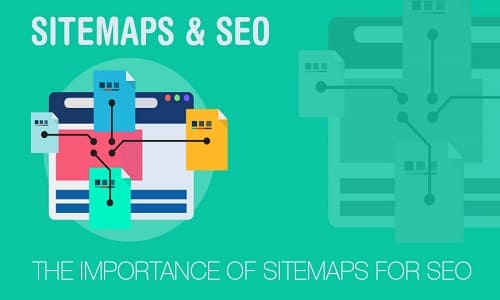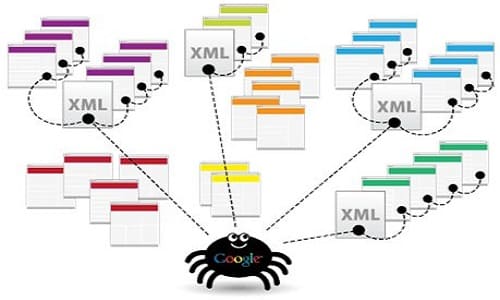Importance of Sitemap in SEO
A sitemap indicates to search engines about pages and files available for crawling on a website. These files are a list of URLs that contain additional information about the pages of the website. Like the date of their last update, for example.

Is sitemap necessary for SEO
- The sitemap is very important for a website and can be seen as an investment. However, it may take some time for creating it. It is also necessary to optimize your sitemaps regularly.
- If the spiders fail to crawl your site, this will result that it will not be indexed. Thus, the content will not be ranked on Google pages or any other search engines.
- Hence, without any ranking within the search results page, your site will not have visitors, which will not generate any traffic.
Types of Sitemaps
On a website, there are mainly two types of sitemap formats, which are as follows:
- HTML sitemaps
- XML sitemaps
HTML sitemaps
- HTML sitemaps are normally more helpful to visitors than to search engine bots and can offer limited SEO value.
- To help visitors find a specific page quickly, they use anchor links to list all the URLs of a website by category.
- Long before navigation menus moved to website headers, HTML sitemaps were more popular. However, for specific use cases, they still provide SEO value.
Benefits of HTML sitemaps
An HTML sitemap offers more benefits in addition to improving the usability of your website as well as the SEO ranking:
Organize large websites
To allow users to quickly find what they are looking for; the sitemap abets essentially as a directory to categorize all the pages on a website.
Categorization of content by search engines is made easy
Search engines need to know what your website is about to rank your content properly.
New content is added easily to dynamic websites
For sites that change quite frequently, sitemaps are critical. Consequently, when adding a new page, the sitemap logically reflects where it is located.
Internal linking made easy
To boost internal linking on your site, thus improving SEO, the sitemap allows quick identification of internal links.
Improve site navigation
Sitemaps can also be used to improve your site’s navigation flow. Hence with an old site with a lot of archived content, it can be handy.
XML Sitemaps
The XML sitemap is a bit more complexed to write than an HTML. Mainly because it comprises all the metadata of a page in a standardized format.
- Mainly they make it easier for search engines and spiders to locate your website pages.
- XML sitemaps provide search engines with the URLs of a website and provide a comprehensive map of all the pages on the site. This allows the search engines to prioritize the pages they crawl.
- Spiders can take a long time to entirely crawl large sites. So, the XML sitemap seems to be very useful in the process.

Types of XML Sitemaps
- Image sitemaps
- Video sitemaps
- News sitemaps
What is the difference between HTML and XML sitemaps?
The main difference is that HTML sitemaps aim to make the website more human-friendly. Whereas XML sitemaps are written only for search engine spiders.
Can a sitemap affect crawling?
Yes, your website sitemap affects crawling. An incorrect website sitemap can cause crawl errors. To avoid being penalized, it should be monitored weekly. Crawl errors can be fixed on Google Search Console.
Your website can and will be flagged for inadequate content and broken links if the bots find multiple crawl errors. Google will simply stop indexing your website if you have numerous broken links and missing pages.
In conclusion
Sitemaps improve a website’s ranking in search engine results, thereby boosting SEO efforts. When a website ranks high on the search engine results page. This makes the website visible to a greater number of Internet users which potentially increases traffic to the website.


